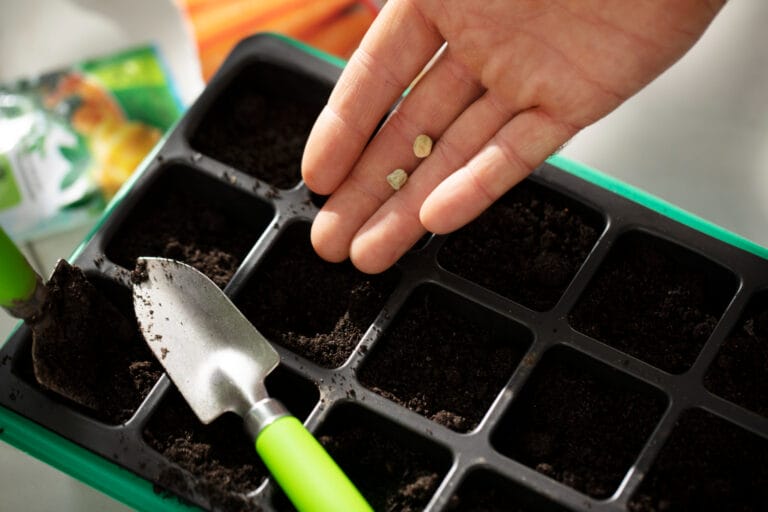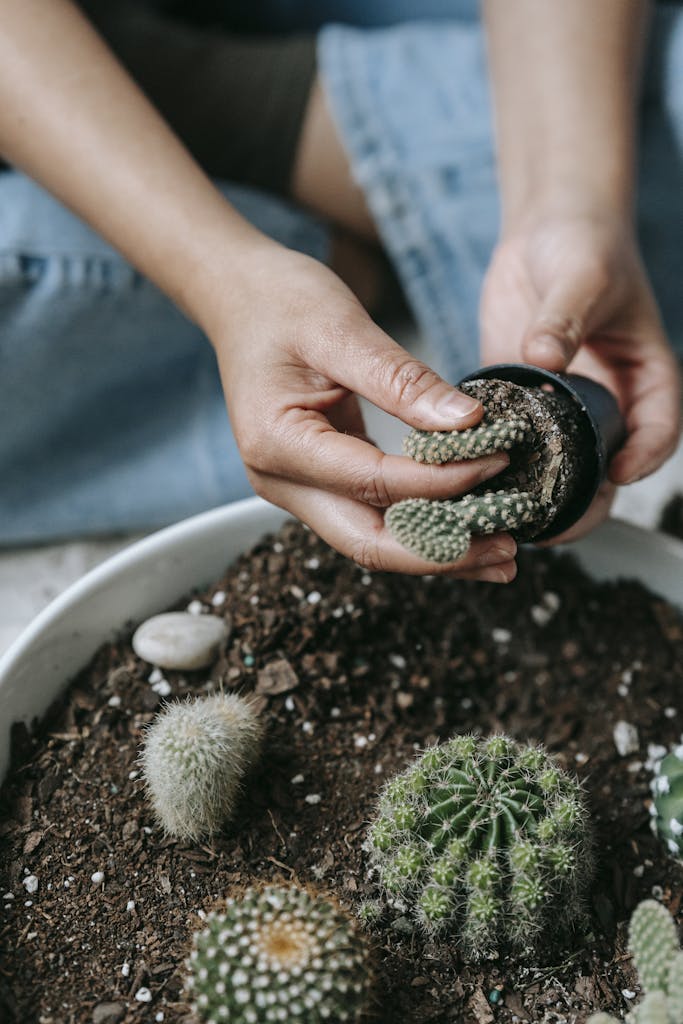How To Adjust Weedeater Carburetor: A Quick Weed Eater Maintenance Guide
When tending to your garden, your weed eater deserves the same amount of attention and care as your lush lawn. People often overlook the carburetor, but it is an integral part of your tool that maintains an equilibrium of air and fuel during engine operation and undeniably calls for your attention.
Over time and with frequent use, this device may need to adjust to keep your trusty tool operating at peak performance. This maintenance guide aims to teach you how to adjust weedeater carburetor. The good news—it’s not as challenging as it appears!
Take note of the suggested fine-tuning guidance for your weed eater’s carburetor. It isn’t only recommended—it’s necessary! Arm yourself with knowledge and get ready for an immersive, straightforward maintenance experience.
Key Takeaways
- Regular carburetor adjustments ensure consistently high performance from your weed eater.
- Necessary tools for adjusting the carburetor include a Philips screwdriver, flat-head screwdriver, wrench sets, carburetor adjusting tools, and a clean workspace.
- Adhere to the guide for proficiently adjusting the carburetor.
- Post adjustment, test your weed eater to verify the absence of stalling or sputtering.
- Required Tools for Carburetor Adjustment
Required Tools for Carburetor Adjustment
To carry out a weedeater carburetor adjustment smoothly, ensure that the following useful tools are at your disposal:
- Philips Screwdriver: An essential tool for tweaking your weedeater’s carburetor.
- Flat-head Screwdriver: This tool helps in tasks the Philips screwdriver might not be able to execute.
- Wrench Sets: These assist in disassembling and reassembling parts of the weed eater.
- Carburetor Adjusting Tools: These specially designed tools facilitate efficient carburetor adjustments.
- Clean Workspace: Maintain a tidy workspace to prevent misplacement of parts.
- Gasoline: Ensure the tank is filled before you begin the carburetor adjustment process.
Is Adjusting the Carburetor Necessary for Maintaining a Weed Eater?
Adjusting the carburetor is essential for maintaining a weed eater. It ensures the proper fuel-air mixture, leading to optimal engine performance. Without adjusting it as outlined in the manual tilling guide for gardening, the weed eater might experience starting issues, run rough, or even stall. Carburetor adjustments guarantee smooth operation and efficient weed trimming.
Step-by-Step Guide on How To Adjust Weedeater Carburetor
Follow this structured guide to adjust your weedeater carburetor seamlessly and efficiently for effective performance.
Step 1: Initial Preparation
Begin by preparing the weed trimmer for the process. Ensure it is off and completely cool to avoid accidents. Equip yourself with gloves and glasses for protection.
Select a spacious, flat workspace and keep it free of clutter or articles that might interfere. Furthermore, ensure the weed eater’s air filter is clean for optimum engine performance.
Before you start the weed eater’s engine adjustments and modifications, warm up your weed eater’s engine by running it for a few minutes until it needs to be warmed up to its operating temperature.
Identify the two screws labeled “Hi” and “Lo” on the side of the engine of the carburetor on a weed eater—your primary points of focus during the adjustments to the carburetor. Have a Phillips screwdriver at arm’s length for this step.
Lastly, check the freshness of your fuel. Just like stale milk harms our stomach, old fuel can affect engine efficiency. If necessary, dispose of the old gas mixture and replenish it with fresh fuel.
With these preparations in place, we can now proceed to reset the adjustment screws.
Step 2: Resetting the Screws
Firstly, locate the two screws on the carburetor labeled “Hi” and “Lo.” Using a small Phillips screwdriver, turn these screws clockwise for complete tightening, then undo each one.
Turn the “Hi” screw counterclockwise by 1.5 turns and the “Lo” screw counterclockwise by 1 turn. These adjustments prep your weed eater to run smoothly, without experiencing stalling or dying.
In case you observe sputtering at full throttle, merely adjust the “Hi” screw less than a quarter turn clockwise until the operation stabilizes.
Step 3: Fine-tuning the High-Speed and Low-Speed Screw
For a smooth-functioning weed eater, it’s vital to fine-tune the high-speed and low-speed screws. These screws control the fuel mixture at varying engine speeds. Start by turning the “Hi” screw counter-clockwise by 1.5 turns and the “Lo” screw counter-clockwise by 1 turn.
Ensure these adjustments are made when the engine is warm for optimal performance. With a small Phillips screwdriver, firmly fix both screws, positioning the needle’s end into the carburetor jets.
Thus, these meticulous adjustments guarantee that your weed eater runs smoothly and efficiently.
Tips for Testing and Ensuring Ideal Weedeater Functioning
Once the carburetor adjustments are finalized, it’s important to test your weedeater and ensure proper functioning. Here’s a list of steps to verify that:
- Start the engine and allow the weed eater to idle for a few minutes.
- Gradually increase the gas throttle to the maximum, checking for any engine sputtering or hesitation.
- Observe the weed eater head engine at full throttle. It should spin without any inconsistencies, deceleration, or abrupt stops.
- Test efficiency by using the weed eater on different types of grasses and weeds to ensure its blades cuts effectively without stall or struggle.
- Monitor the fuel consumption rate during operation as it may be indicative of any fuel-related issues.
For overall optimal functioning, observe the following maintenance steps:
- Ensure all screws, bolts, and nuts are tightly secured before every use.
- Regularly clean or replace air filters based on the manufacturer’s instructions to avoid blockages and maintain the best airflow.
- Always use a fresh fuel mixture following the manufacturer’s recommended gasoline and oil ratio for a two-cycle engine.
- Check fuel lines regularly for leaks or cracks, replacing them if required.
Always remember, regular maintenance contributes to prolonging your weed eater’s life while ensuring smooth operations each time you use it in your lawn and garden tasks!
Frequently Asked Questions
What is the first step to adjust a weed eater carburetor?
Ensure the trimmer engine is warmed up. Then, locate the two fuel adjustment screws on your weed eater’s carburetor.
How can I make adjustments to my weedeater carburetor?
Using a Phillips screwdriver, slightly turn the “lo” and “hi” screws on your weedeater’s carburetor until you achieve an optimal fuel mixture.
Can adjusting my weedeater’s idle prevent it from dying or stalling?
Adjust the idle by turning the idle-adjustment screw when the engine is idle. This can help prevent your weedeater from dying or stalling.
How do I optimize the performance of my string trimmer?
Adjust both low-speed and high-speed screws on your string trimmer’s carburetor for optimal results. Also, consider factors like load size and freshness of fuel.
Is there any additional maintenance required after adjusting a weed eater’s carburetor?
Thoroughly cleaning components like the primer bulb, diaphragm, screen, jets, and breather plate can enhance the longevity of weed eaters post the adjustment phase.
Do I need professional tools to clean parts like the jets of a carburetor post-adjustment?
Not necessarily, basics like an Ultrasonic Carb Cleaner should suffice. However, for complex tasks involving larger sections like the housing unit, consulting with small engine professionals beforehand is advisable.
Conclusion: The Importance of Regular Weedeater Maintenance
Regularly maintaining your weedeater, especially adjusting the carburetor, is crucial for its smooth functioning. Following the step-by-step guide in this article and making minor adjustments to the screws can guarantee the optimal functioning of your weedeater.
Remember to ensure that the engine idles smoothly without any signs of stalling or sputtering after testing it. Regularly caring for your weedeater not only prolongs its life but also yields better results when dealing with stubborn weeds in your garden.
Happy gardening!







